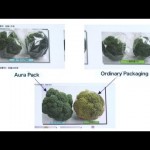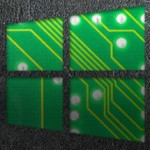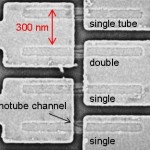First look: Pandora 4.0, the new mobile frontier
Enlarge / Pandora 4.0: the new look Pandora Here comes Pandora 4.0, a big remake of the music service's mobile listening environment. If you are a Pandora fan, get ready for expanded playlist, station-making, lyric-reading, personal profile, and social networking power on your smartphone. The new service creates a "unifying" experience across web and mobile devices, the company proclaims. It also represents about six or seven years of planning, thinking, and development for the outfit. Back in 2005, iPhone and Android mobile gadgets were gleams in the eye of Apple and Google. Pandora, however, was transforming radio and music distribution with its sophisticated "genome" powered song recommendation algorithm. Millions of users were clicking thumbs up or down to millions of tunes on, well, millions of Pandora channels. By 2007, Pandora was a huge hit. It was, however, mostly a desktop computer hit. "We started thinking about creating a mobile service in 2004," Pandora CTO Tom Conrad told us in an interview. "We wanted to unify the Pandora experience." That meant an experience that was easy from the start, that allowed users to individualize their environment and get more of what they wanted, and that was "ubiquitously available." Read 16 remaining paragraphs | Comments
Facebook tries cloaking probe into data leak involving 1 million accounts
Facebook officials told a blogger to keep their discussions with him private as they investigate claims he acquired names and e-mail addresses belonging almost one million account holders for $5 through a publicly available service online. "Oh and by the way, you are not allowed to disclose any part of this conversation," member's of Facebook's platform policy team said during a tape-recorded telephone conversation, according to a blog post published by Bogomil Shopov, who describes himself as a "community and technology geek" who lives in Prague, Czech Republic. "It is a secret that we are even having this conversation." Shopov said Facebook officials set up the conversation after an earlier blog post claiming he purchased data for one million Facebook users online for just $5. The blogger said it was impossible for him to determine exactly how recent the data was, although several of the entries he checked contained accurate e-mail addresses for people he knew. In addition to containing names and e-mail addresses, the cache he purchased also contained profile IDs. In an e-mail to Ars, Shopov said he suspects the data came from a third-party developer. The website selling the information has since removed the post that advertised the data, but for the time being it's still available in Google cache . Read 6 remaining paragraphs | Comments
Super-Cellophane Can Keep Veggies Fresh for Months
A Japanese company has developed an advanced plastic cellophane that promises to vastly extend the shelf life of fresh vegetables and fruit. By preventing the produce from losing moisture and eliminating excess CO2 buildup, Belle Green Wise's new Aura Pack has been found to keep some fruits fresh for a whopping three to four months. More »
Philips hue: the ‘world’s smartest’ LED lightbulb that saves you time during Red Alerts
Historically, altering the lighting color of a room required draping a gossamer-thin cloth over a lamp or buying a new bulb from the store. Philips has sought to solve that most taxing of first-world problems with the hue, a smartphone-controlled LED bulb that can cycle through shades at your whim. As well as block colors, you can use photos to create palette and can control the units even when away from home. It'll be an Apple Store exclusive from October 30th, with individual units setting you back $59 (£49, €59) and three-bulb introduction pack with a wireless bridge for $199 (£179, €199). If that seems a little steep, just console yourself in the knowledge that it's a thousand times more useful than other lighting devices we've seen this year. Continue reading Philips hue: the 'world's smartest' LED lightbulb that saves you time during Red Alerts Filed under: Misc , Wireless Philips hue: the 'world's smartest' LED lightbulb that saves you time during Red Alerts originally appeared on Engadget on Mon, 29 Oct 2012 10:36:00 EDT. Please see our terms for use of feeds . Permalink | | Email this | Comments
Penguin and Random House merge, promise a brave new e-book future
The pressure of digital transitions can lead traditional media companies to circle the wagons -- for better or for worse -- and book publishers certainly aren't immune as e-books take hold. Bertelsmann and Pearson are worried enough to be merging their respective Random House and Penguin publishing wings into a joint venture, not-so-creatively titled Penguin Random House, that they hope will better survive "long-term trends" like the shift away from paper-centric business models. While the two are engaged in the usual corporatespeak of creating "synergies" (read: resource cuts), we're more interested in talk of the union being a springboard for digital efforts: Penguin Random House wants to be "more adventurous" with e-book models like self-publishing . Whether the merger leads to a renaissance for established publishers or just reduced competition when the deal closes in the back half of 2013, we're bracing ourselves for the possibility of a Fifty Shades of Jamie Oliver crossover. Continue reading Penguin and Random House merge, promise a brave new e-book future Penguin and Random House merge, promise a brave new e-book future originally appeared on Engadget on Mon, 29 Oct 2012 10:15:00 EDT. Please see our terms for use of feeds . Permalink | The Guardian | Email this | Comments
Better on the inside: under the hood of Windows 8
Windows 8's most obvious—and most divisive—new feature is its user interface . However, it would be a mistake to think that the user interface is the only thing that's new in Windows 8: there's a lot that's changed behind the scenes, too. Just as is the case with the user interface, many of the improvements made to the Windows 8 core are motivated by Microsoft's desire to transform Windows into an effective tablet operating system. Even those of us with no interest at all in tablets can stand to take advantage of these changes, however. For example, Windows 8 is more power efficient and uses less memory than Windows 7; while such work is critical to getting the software to run well on low-memory tablets with all-day battery life, it's equally advantageous for laptop users. The biggest single piece of technology that is new to Windows 8 is, however, squarely Metro focused: it's a large set of libraries and components called WinRT. I've already written extensively about what WinRT is, so I won't be getting into that here, but there are system capabilities that WinRT apps can use (or are forced to use) that are interesting in their own right. Read 77 remaining paragraphs | Comments
IBM prepares for end of process shrinks with carbon nanotube transistors
Carbon nanotubes sit on top of features etched in silicon. IBM Research The shrinking size of features on modern processors is slowly approaching a limit where the wiring on chips will only be a few atoms across. As this point approaches, both making these features and controlling the flow of current through them becomes a serious challenge, one that bumps up against basic limits of materials. During my visit to IBM's Watson Research Center, it was clear that people in the company is already thinking about what to do when they run into these limits. For at least some of them, the answer would involve a radical departure from traditional chipmaking approaches, swithching from traditional semiconductors to carbon nanotubes. And, while I was there, the team was preparing a paper (now released by Nature Nanotechnology ) that would report some significant progress: a chip with 10,000 working transistors made from nanotubes, formed at a density that's two orders of magnitude higher than any previously reported effort. During my visit to Watson, I spoke with George Tulevski, who is working on the nanotube project, and is one of the authors of the recent paper. Tulevski described nanotbues as a radical rethinking of how you build a chip. "Silicoon is a solid you carve down," he told Ars, "while nanoubes are something you have to build up." In other words, you can't start with a sheet of nanotubes and etch them until you're left with the wiring you want. Read 9 remaining paragraphs | Comments
Anonymous takes aim at Zynga
The hacker group says layoffs at Zynga will lead to the "end of the US game market as we know it" as jobs get shipped overseas, and it vows to take action. [Read more]
Storage Spaces explained: a great feature, when it works
Windows Home Server was never a particularly popular product, but it did bring some interesting features to the table for the few who used it and became fans. One of these features was called Drive Extender, and its claim to fame was that it allowed users to pool their system's hard drives so that they were seen by the operating system as one large hard drive. This obviated the need to keep track of the amount of free space across several disks, and it also allowed users to automatically mirror their data to multiple disks at once, keeping their files safe in the event of drive failure. Microsoft killed Drive Extender not long before pulling the plug on the Windows Home Server entirely , but the intent behind it lives on in Windows 8's new Storage Spaces feature: "Storage Spaces is not intended to be a feature-by-feature replacement for that specialized solution," wrote Microsoft’s Rajeev Nagar in a blog post introducing the feature, "but it does deliver on many of its core requirements." In essence, Storage Spaces takes most of Drive Extender’s underlying functionality and implements it in a way that is more technically sound; early versions of Drive Extender sometimes corrupted data when copying files between drives and mangled file metadata, but the underlying filesystem improvements made to support Storage Spaces should make it much more robust, at least in theory. Read 40 remaining paragraphs | Comments













